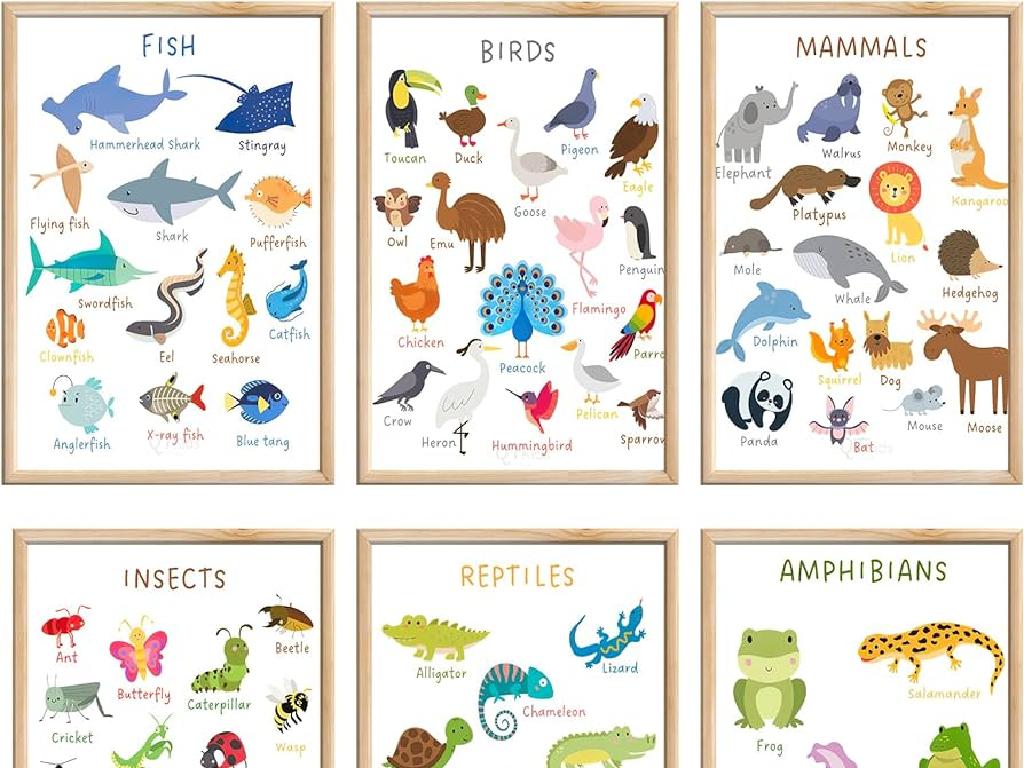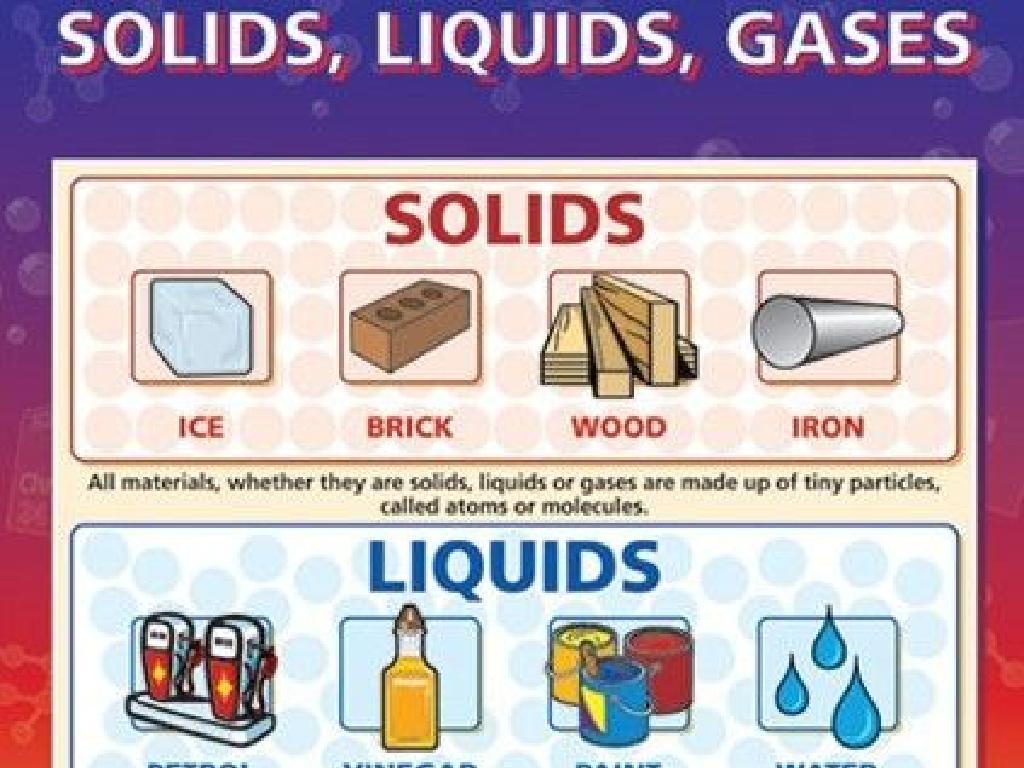Calculate Quartiles And Interquartile Range
Subject: Math
Grade: Eighth grade
Topic: One-Variable Statistics
Please LOG IN to download the presentation. Access is available to registered users only.
View More Content
Quartiles and Interquartile Range in Statistics
– What are Quartiles?
– Quartiles divide data sets into four equal parts.
– Calculating Quartiles
– Q1 is the median of the lower half, Q3 of the upper half.
– Interquartile Range (IQR)
– IQR = Q3 – Q1, measures spread of the middle 50%.
– Real-life Importance of Quartiles
– Quartiles help understand data distribution & outliers.
|
Begin with an explanation of quartiles as a concept that helps us divide a data set into four equal parts, which is crucial for understanding the distribution of values. Show how to calculate the first (Q1) and third (Q3) quartiles by finding the median of the lower and upper halves of the data set, respectively. Emphasize the calculation of the Interquartile Range (IQR) by subtracting Q1 from Q3, which gives a measure of the spread of the middle 50% of the data, and is less affected by outliers than the full range. Discuss the importance of quartiles in real-life situations, such as in business, science, and economics, where they are used to identify outliers, understand variability, and make decisions based on data distribution.
Understanding Quartiles in Data
– Quartiles divide data into 4 equal parts
– First Quartile (Q1): Middle of the lower half
– Also known as the 25th percentile
– Second Quartile (Q2): Median of the data
– Also known as the 50th percentile
– Third Quartile (Q3): Middle of the upper half
– Also known as the 75th percentile
|
Quartiles are a type of quantile which divide a rank-ordered data set into four equal parts, and can be very useful in statistical analysis to summarize a data set with a few numbers. The first quartile (Q1) is the median of the lower half of the data, not including the median if the data set has an odd number of observations. The second quartile (Q2) is the median of the data set, which divides the data into two equal parts. The third quartile (Q3) is the median of the upper half of the data. When teaching this concept, use a data set to demonstrate how to calculate each quartile and discuss the importance of these measures in understanding the distribution of data. Have students practice with different data sets to solidify their understanding.
Calculating Quartiles in Data Sets
– Organize data from least to greatest
– Determine the median (Q2)
– The median splits the data into two halves
– Find Q1 and Q3 medians
– Q1 is the median of the lower half, Q3 of the upper half
– Understand the IQR
– IQR is the range between Q1 and Q3, showing spread
|
Begin by arranging the data points in ascending order to make it easier to find the median, or Q2, which divides the dataset into two equal parts. Once Q2 is located, the dataset is split into two halves. The median of the lower half is Q1, and the median of the upper half is Q3. These quartiles help describe the spread and center of the data. The interquartile range (IQR) is the difference between Q3 and Q1 and it measures the middle 50% of the data. This is a crucial step in understanding data distribution and is particularly useful for identifying outliers. Have students practice with example datasets to solidify their understanding.
Understanding Interquartile Range (IQR)
– IQR measures middle 50% spread
– It’s the difference between the 1st (Q1) and 3rd (Q3) quartiles
– IQR = Q3 minus Q1
– Subtract the 1st quartile from the 3rd quartile
– IQR excludes outliers
– IQR reflects data consistency
– A smaller IQR indicates more consistent data
|
The Interquartile Range (IQR) is a statistical measure used to describe the dispersion or spread of the middle half of a data set, specifically the range between the first quartile (Q1) and the third quartile (Q3). To calculate IQR, simply subtract Q1 from Q3. This measure is particularly useful because it excludes the influence of outliers, which can skew the data. A smaller IQR suggests that the data points are closer together, indicating consistency within the dataset. During the lesson, provide students with a data set to calculate the IQR, ensuring they understand how to identify Q1 and Q3, and how to interpret the IQR in the context of data analysis.
The Importance of Interquartile Range (IQR)
– IQR measures data variability
– Spread of the middle 50% of a dataset
– IQR is robust against outliers
– Unlike range, extreme values don’t skew IQR
– IQR’s role in various fields
– Finance: risk assessment; Engineering: quality control; Meteorology: temperature variation
– Understanding IQR enhances data analysis
|
The Interquartile Range (IQR) is a critical concept in statistics that provides insight into the spread of the middle half of a dataset. It’s particularly valuable because it is not as sensitive to extreme values as the total range, making it a more reliable measure of variability. Students should understand that IQR is widely used in various professional fields to analyze data more effectively. For instance, in finance, it helps assess investment risks; in engineering, it’s used for quality control; and in meteorology, it can describe temperature variations. Emphasize the practical applications of IQR to help students appreciate its importance in real-world scenarios.
Calculating Quartiles and IQR
– Quartiles divide data into quarters
– Q1, Q2, Q3: positions in ordered set
– Q1 is the median of the first half, Q2 is the overall median, Q3 is the median of the second half
– Example dataset: [4, 8, 15, 16, 23, 42]
– Let’s order the data and find the medians of these halves to determine Q1, Q2, and Q3
– IQR: Q3 minus Q1, measures spread
– IQR = Q3 – Q1, a smaller IQR indicates less spread in the middle 50% of the data
|
This slide introduces students to the concept of quartiles and the interquartile range (IQR) as measures of spread within a dataset. Quartiles are values that divide a list of numbers into quarters once it has been ordered from least to greatest. Q1 (the first quartile) is the median of the lower half of the dataset, Q2 (the second quartile) is the median of the entire dataset, and Q3 (the third quartile) is the median of the upper half of the dataset. The IQR is calculated by subtracting Q1 from Q3 and represents the range of the middle 50% of the data, providing insight into the dataset’s variability. Use the example dataset to demonstrate how to calculate each quartile and the IQR. Encourage students to practice with additional datasets to solidify their understanding.
Class Activity: Exploring Quartiles
– Pair up and calculate dataset quartiles
– Discuss the IQR’s usefulness
– How does the IQR help understand data spread?
– Share findings with the class
– Reflect on the activity
– Think about what you learned from this exercise
|
This activity is designed to provide hands-on experience with calculating quartiles and understanding the interquartile range (IQR). Students will work in pairs to foster collaboration. Provide each pair with a unique dataset to calculate the first (Q1), second (Q2), and third (Q3) quartiles. Guide them to discuss the IQR, which is the difference between Q3 and Q1, and its significance in representing the middle 50% of the data. Encourage them to consider how the IQR can be used to identify outliers and understand data variability. After calculations, each pair will present their findings, promoting communication skills. Possible datasets could include test scores, heights, daily temperatures, etc. Ensure that each dataset has an appropriate number of data points to calculate quartiles.
Conclusion & Reflection: Quartiles & IQR
– Recap: Quartiles & IQR
– Quartiles divide data into 4 equal parts; IQR measures spread between Q1 & Q3
– Real-world application
– Useful in fields like finance to identify stock volatility or in weather forecasting to analyze temperature ranges
– Open floor for questions
– Reflect on today’s lesson
|
As we conclude today’s lesson, we’ll revisit the concept of quartiles and the interquartile range (IQR), emphasizing their importance in understanding data distribution. Discuss how quartiles and IQR can be applied in real-world scenarios, such as financial risk assessment or comparing climate patterns, to make the lesson tangible for students. Open the floor for any questions to clarify doubts and encourage students to reflect on what they’ve learned, how they’ve understood the concepts, and how they might use this knowledge in the future. This reflection will help solidify their understanding and see the value of statistics in everyday life.






